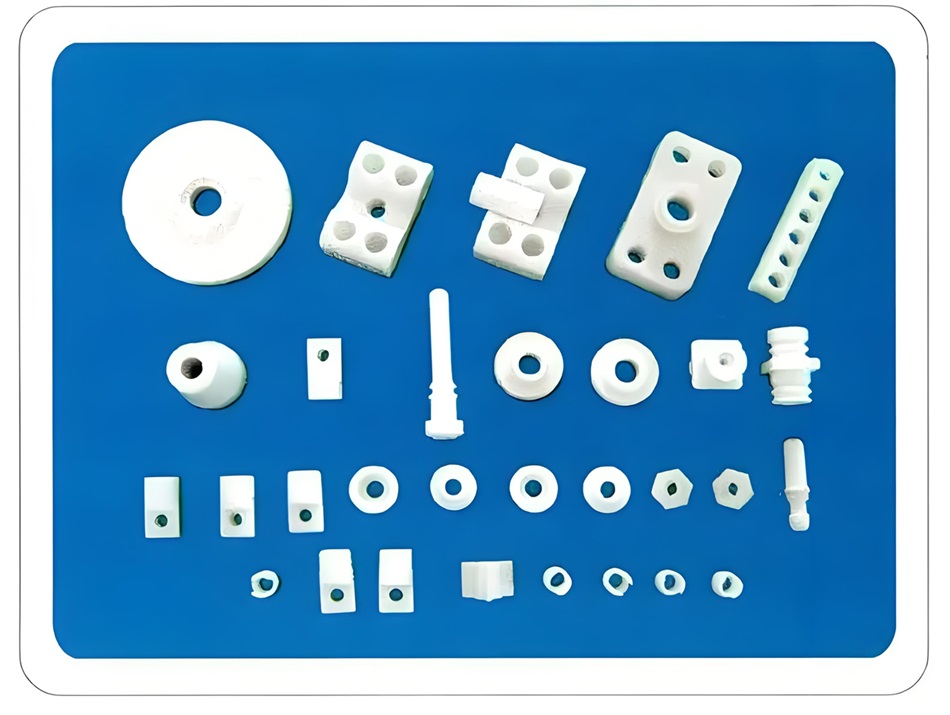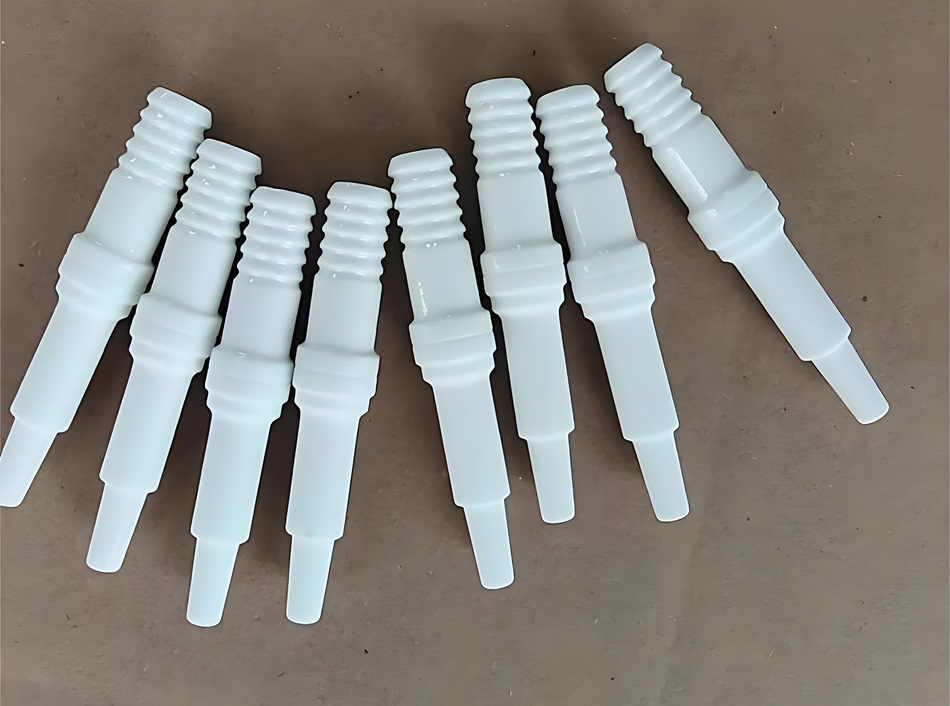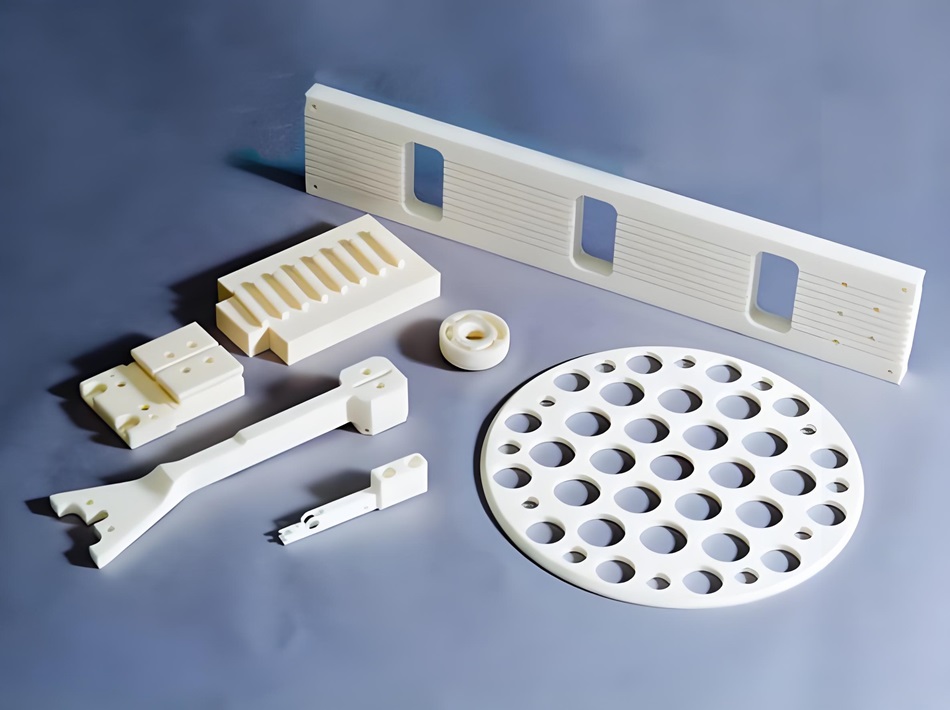Basic definition and classification of sintered ceramics
What are sintering ceramics?
Sintered ceramics are ceramic materials made through a sintering process, which involves heating ceramic powders at high temperatures to consolidate them into a hard, dense structure. Sintering is a very critical step in ceramic manufacturing, which uses heat to bond the surfaces between powder particles to form larger, continuous masses.
Sintered ceramic production process
- Powder preparation: First, fine ceramic powders need to be prepared, which can be obtained by mechanical grinding or chemical synthesis.
- Molding: The powder is formed into the desired shape through pressing or other molding techniques such as injection molding, extrusion molding, etc.
- Sintering: The formed “green body” (unsintered ceramic body) is placed in a furnace and heated to a temperature close to its melting point, but not so hot that it melts. During this process, physical and chemical reactions occur between the powder particles, and the particles fuse together to form a hard substance.
Main categories of sintered ceramics
- Oxide ceramics
Oxide ceramics are ceramics made of metal oxides as the main component. They usually have good thermal stability, mechanical strength and corrosion resistance. They mainly include:
- Alumina (Alumina, Al₂O₃): widely used in electronic packaging, insulators, abrasives and wear-resistant parts.
- Zirconia (ZrO₂): often used in cutting tools, artificial bones and dental implants due to its high toughness and wear resistance.
- Magnesia (MgO): often used as lining material for high-temperature furnaces.
- Non-oxide ceramics
Non-oxide ceramics usually have higher hardness and heat resistance than oxide ceramics, but may be slightly inferior in toughness. They include:
- Silicon Carbide (SiC): known for its excellent thermal conductivity and wear resistance, it is often used in high-temperature structural applications, automotive brake discs and semiconductor devices.
- Boron Carbide (B₄C): one of the substances with the second highest known hardness after diamond, often used in bulletproof vests and abrasives.
- Silicon Nitride (Si₃N₄): has excellent mechanical properties and thermal shock stability, suitable for high-temperature bearings and turbine blades.
- Composite ceramics
Composite ceramics are composed of two or more different types of ceramic materials, designed to combine the advantages of each to improve the overall performance. For example:
- Silicon carbide reinforced alumina: combines the chemical stability of alumina and the mechanical strength of silicon carbide, used in applications requiring extremely high wear resistance and high temperature resistance.
- Zirconia reinforced silicon carbide: provides higher toughness and fracture toughness, suitable for environments that need to withstand high impact.
- Bioceramics
Bioceramics are specially designed for medical applications such as orthopedic implants and dental implants, with excellent biocompatibility and bioactivity. Mainly include:
- Bioactive glass: ceramic material that can bond with human bone tissue.
- Calcium phosphate ceramics (such as hydroxyapatite): widely used in orthopedic implants and repairs.
Here is a table that categorizes sintered ceramics, listing typical examples and their applications:
| Category | Examples | Applications |
| Oxide Ceramics | Alumina (Al₂O₃), Zirconia (ZrO₂), Magnesia (MgO) | Electronic packaging, insulators, abrasives, wear-resistant parts |
| Non-Oxide Ceramics | Silicon Carbide (SiC), Boron Carbide (B₄C), Silicon Nitride (Si₃N₄) | High-temperature structural applications, automotive brake disks, semiconductor equipment |
| Composite Ceramics | Alumina reinforced with Silicon Carbide, Zirconia reinforced with Silicon Carbide | Applications demanding high wear resistance and high temperature |
| Bioceramics | Bioactive glass, Calcium Phosphate Ceramics (e.g., Hydroxyapatite) | Orthopedic and dental implants, bone tissue regeneration |
This table summarizes the different types of sintered ceramics and their significant applications in various industrial and medical fields, showcasing the diversity and widespread use of ceramic materials.
Key technologies of ceramic sintering process
- Powder preparation
Powder preparation is the basis of ceramic sintering, and its quality directly affects the uniformity and performance of the sintered body. High-quality ceramic powder is usually prepared by the following methods:
- Mechanical grinding: using a ball mill to grind the raw materials into fine powder.
- Chemical method: preparing powders with specific chemical composition and particle size through sol-gel, chemical deposition and other technologies.
- Atomic layer deposition (ALD): used to prepare ultrafine and high-purity ceramic powders.
- Powder molding
Molding is the process of converting powder into the desired shape. The key is to maintain the uniform distribution of powder and avoid defects. Common molding techniques include:
- Dry pressing: directly pressing powder in a mold.
- Injection molding: mixing powder with an organic binder and injecting it into a mold.
- Extrusion molding: suitable for manufacturing tubular or rod-shaped ceramic products.
- Sintering
Sintering is the most critical step in the ceramic manufacturing process. It uses high-temperature treatment to cause physical and chemical reactions between powder particles to form a dense ceramic body. Key technologies in the sintering process include:
- Temperature control: Ensure that the sintering temperature is high enough to promote sintering of particles, but not too high to deform or damage the material.
- Atmosphere control: The atmosphere (oxidation or reduction) during the sintering process can significantly affect the microstructure and properties of the ceramic.
- Time control: The sintering time needs to be precisely controlled to ensure sufficient sintering without over-sintering.
- Post-processing
After sintering, ceramics usually require post-processing to meet the requirements of the final application. Common post-processing techniques include:
- Machining: such as cutting and grinding to form precise dimensions and surface finish.
- Surface treatment: such as coating or infiltration to improve the wear resistance of ceramics or improve other surface properties.
Industrial Applications of Sintered Ceramics
Sintered ceramics play a vital role in many industrial fields due to their excellent physical and chemical properties. Here are some of the main industrial applications of sintered ceramics:
- Electronics Industry
In the electronics industry, sintered ceramics are mainly used to manufacture electronic packaging, insulators and substrates. For example:
- Alumina and aluminum nitride: Commonly used in electronic packaging materials, with excellent thermal conductivity and electrical insulation, suitable for high-power devices.
- Zirconia: Due to its high breaking strength and low thermal expansion coefficient, it is often used to make electronic ceramic substrates and insulators.

- Aerospace
The application of sintered ceramics in the aerospace field is mainly reflected in its high temperature resistance, wear resistance and lightweight characteristics, suitable for use in extreme environments:
- Silicon carbide and silicon nitride: Used to manufacture jet and turbine engine components, such as turbine blades, because they can withstand high temperatures and high pressures.
- Alumina: Used to manufacture rocket engine insulation and other high-temperature resistant components.

- Automotive Industry
Sintered ceramics are mainly used in the automotive industry to improve the performance and durability of automobiles:
- Silicon carbide and boron carbide: Due to their high hardness and good wear resistance, they are often used to make automotive brake discs and brake pads.
- Silicon nitride: Used to make automotive engine parts, such as pistons and cylinders, because it can improve engine efficiency and reduce fuel consumption.

- Biomedical Applications
Sintered ceramics are widely used in human implants and medical devices in the biomedical field due to their biocompatibility and corrosion resistance:
- Zirconia and hydroxide apatite: Used to make artificial joints and dental implants, such as artificial hip joints and dental implants.
- Bioactive glass: Used for bone repair and reconstruction, it can promote the growth and healing of bone tissue.

- Energy Sector
In the energy sector, especially nuclear energy and renewable energy, sintered ceramics are key materials due to their high temperature stability and radiation resistance:
- Alumina and boron nitride: Used in control rods and shielding components of nuclear reactors because they can withstand extreme nuclear radiation and high temperatures.
- Zirconia: used as electrolyte material for solid oxide fuel cells (SOFC) due to its excellent ionic conductivity.

These applications of sintered ceramics demonstrate their diversity and irreplaceability in modern industrial technology, especially in areas that require materials to have ultra-high performance.
Future Trends and Market Prospects of Sintered Ceramics
The future trends and market prospects of sintered ceramics present several important development directions, which not only herald breakthroughs in new technologies, but also reflect changes in market demand and the industry’s continuous pursuit of high-performance materials. The following are some key trends in the field of sintered ceramics:
- Technological innovation
Technological progress is one of the key driving forces for the development of sintered ceramics:
- Nanotechnology: Using nanoparticles or nanostructures to improve the mechanical and thermal properties of ceramics, thereby achieving unprecedented performance standards.
- Additive manufacturing (3D printing): 3D printing ceramic technology is revolutionizing the manufacturing process, allowing more complex designs and rapid prototyping, providing unparalleled design freedom and manufacturing flexibility.
- Composite research and development: By combining ceramics with other materials (such as metals or polymers), composite materials are manufactured to take advantage of the advantages of each component and enhance the performance of the overall material.
- Environment and sustainability
With the global emphasis on environmental protection and sustainable development, the production of sintered ceramics is also facing more and more environmental challenges and requirements:
- Reducing energy consumption and waste: Optimizing the sintering process to reduce energy consumption and waste generation during the production process.
- Recycling and reuse: Develop recycling technology for ceramic materials, improve the recycling rate of materials, and reduce resource consumption.
- Expansion of application areas
With the improvement of performance and the reduction of costs, the application areas of sintered ceramics are expanding:
- Biomedical applications: The application of sintered ceramics in the biomedical field will continue to grow, especially in artificial bones, dental implants and tissue engineering.
- Electronics and optoelectronics industry: The application of high-performance ceramic materials in industries such as semiconductors, LEDs and photovoltaics continues to increase, especially in thermal management and insulation materials.
- Energy field: In energy storage and conversion devices, such as solid-state batteries and fuel cells, the demand for sintered ceramics as key materials is increasing.
- Market economy
The global market demand for high-performance sintered ceramics continues to grow, especially in high-tech manufacturing in Asia, North America and Europe. In addition, with the acceleration of industrialization in developing countries, market demand in these regions is also rising rapidly.
The future market prospects of sintered ceramics are broad. With the continuous development of new technologies and the continuous expansion of application areas, sintered ceramics will play a more critical role in many high-tech and high value-added fields.



